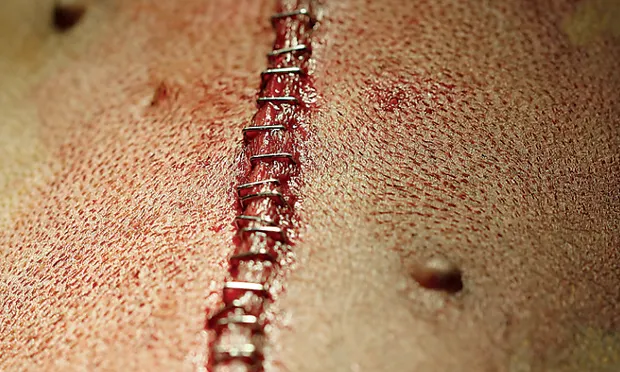Antimicrobial Regimens & Surgical Site Infections

Designed to bridge the gap between research pages and daily practice protocol, the following pearls offer tips and techniques to grow the general practitioner’s standards of practice.
In the Literature
Aiken MJ, Hughes TK, Abercromby RH, Holmes MA, Anderson AA. Prospective, randomized comparison of the effect of two antimicrobial regimes on surgical site infection rate in dogs undergoing orthopedic implant surgery. Vet Surg. 2015;44(5):661–667.
The Research …
This prospective randomized study investigated the effectiveness of 2 different antibiotic regimens in preventing surgical site infections (SSIs). Dogs undergoing clean orthopedic procedures (n = 400) were randomly assigned to 1 of 2 treatment groups: Group 1 (n = 197) received perioperative prophylactic antimicrobial therapy with a second-generation cephalosporin (cefuroxime, IV every 90 minutes); group 2 (n = 203) received the same perioperative cefuroxime dosing and cephalexin continued PO for 5 days postoperatively. Follow-up included investigator examination (blinded to treatment groups), owner questionnaire, or referring veterinarian interview at 2 weeks, 6 weeks, and >1 year postoperatively. Data were compared with Fisher’s exact test and binary logistic regression analyses. Dogs undergoing tibial plateau leveling osteotomy (TPLO) were analyzed separately from and compared with other surgical procedures.
There was no significant difference in SSIs between groups 1 and 2 or between dogs undergoing TPLO vs other surgeries. Treatment group, breed, sex, surgery type, surgery length, anesthetic length, and first or second surgery within the study period did not increase likelihood of infection. Year of age did not affect risk except for its influence between 2 and 6 weeks postoperative; at that point, SSI risk increased 1.5 times for every increase in age of 1 year.
This large, well-designed investigation found no difference in SSIs between perioperative antimicrobial vs perioperative plus postoperative antimicrobial protocols.
… The Takeaways
Key pearls to put into practice:
Perioperative antimicrobial use is safe and appropriate for dogs.
There is no indication to continue prophylactic antibiotic therapy postoperatively in dogs undergoing clean orthopedic surgeries. (This is consistent with recommendations for prophylactic antimicrobial use in humans undergoing surgery.1)
Antibiotic therapy may prevent SSI but should not be used unnecessarily. It can result in the development of antibiotic-resistant bacteria, suppression of normal bacterial flora, increased risk for hospital-acquired infections, adverse drug reactions, and unnecessary cost.
The SSI rate did not differ between dogs undergoing TPLO compared with other clean orthopedic procedures; thus, antibiotic therapy need not be treated differently.